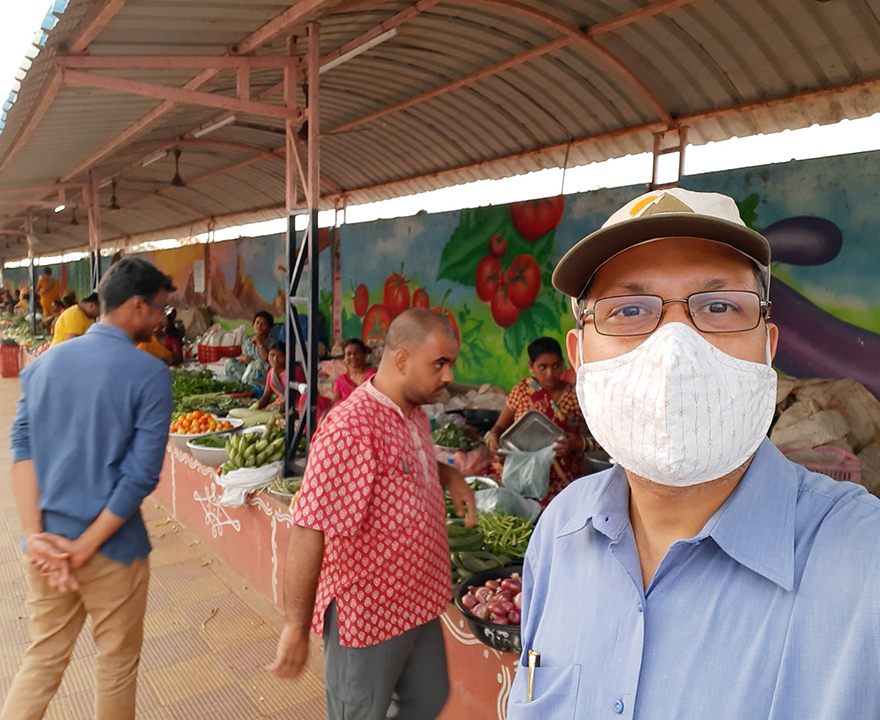CBDC field research insights

CBDC field research insights
- March 8, 2023
- Bill Maurer, UCI anthropologist and Institute for Money, Technology and Financial Inclusion director, weighs in
-----
From March to June 2022, researchers around the globe affiliated with the Institute for Money, Technology & Financial Inclusion (IMTFI) conducted fieldwork and survey research in order to understand the existing digital and mobile payment landscape in four countries. This research informed a new report on central bank digital currency design by Maiden Labs and the Digital Currency Initiative at MIT, described below, and the results are highlighted in a series of blogposts on the IMTFI website.
Putting the focus on everyday people’s lives, hopes, and struggles, these researchers tell a rich story about how the seemingly simple act of paying for something or receiving money can be fraught with politics, drenched in emotion, or simply another instance of infrastructural failure. There are risks of fraud and scams; there is mistrust; but there are also opportunities for fun, for creatively working around the system, and for helping friends and family. This incredibly variegated landscape shows that one size may not fit all; that you can’t plan a digital payments system without attending to social hierarchy, power, and trust; and that sometimes things as basic as reliable electricity and network coverage are at the crux of technology adoption. These illuminating blogposts from IMTFI affiliates in India, Indonesia, Nigeria, and Mexico highlight why we always need to begin and end with actual users’ needs and concerns, with collective action and social relationships—as well as, ironically perhaps, the role cash continues to play in serving the public interest in accessible and affordable means of payment.
These insights were integral to a new report, CBDC: Expanding Financial Inclusion or Deepening the Divide? Exploring Design Choices that Could Make a Difference.
This report uniquely focuses on users, especially society’s most vulnerable, and is an interdisciplinary collaboration between the MIT Digital Currency Initiative and Maiden Labs, funded by the Gates Foundation. Findings are drawn from:
- design research to identify the important open technical design choices and ways forward for CBDC;
- infrastructure research on existing money technologies to understand the broader public-private dynamics in which CBDC financial inclusion issues are centered; and
- fieldwork to understand the financial experiences of people in four low- and middle-income countries (India, Indonesia, Nigeria, and Mexico) and the ways existing money technologies are failing them or helping them flourish.
For policymakers, technologists, financial-inclusion advocates, and social scientists interested in CBDCs’ risks and opportunities, this report’s insights include concrete areas for focus, ideas for design directions, and recommendations for future research. It is a resource for anyone wishing to understand how we can design a digital currency that expands financial inclusion and operates in the public interest, rather than one that exacerbates or even creates a new digital divide for currency.
Read:
Report | Executive Summary
Regional Insights from Fieldwork (blog posts)
- INDIA
- INDONESIA
- Public Perception and Acceptance of Digital Payment Systems in Indonesia by Agus Indiyanto (Universitas Gadjah Mada, Indonesia)
- Digital versus Cash Use among Women Urban Entrepreneurs in Greater Jakarta by Caroline Mangowal (PhD, Founder of RISE Indonesia)
- Hierarchies of Participation: Experiences with Cashlessness in Indonesia by Sunniva Sandbukt (Assistant Professor at the IT-University of Copenhagen)
- MEXICO
- Frictions to Implement a CBDC: A View from the US-Mexico Family Remittance Corridor by Bernardo Bátiz-Lazo (Northumbria University and Universidad Anahuac) and Ignacio González Correa (University of California, Davis)
- Challenging Common Assumptions about Access to Financial Services: Reflections from Rural Mexico by Clément Crucifix (UCLouvain, Belgium)
- NIGERIA
-Bill Maurer, UCI
-pictured: A cash-only vegetable market in India. Courtesy of Debashis Acharya, School
of Economics, University of Hyderabad.
-----
Would you like to get more involved with the social sciences? Email us at communications@socsci.uci.edu to connect.
Share on:
Related News Items
- Careet RightThe penny stops here: As 200-year-old coin ends its run, retailers face costly shift without clear rules
- Careet RightBanks plead for federal guidance as penny shortage spreads
- Careet RightStablecoins and tribal chiefs: Monetary authority after the GENIUS Act
- Careet RightPenny shortages causing big legal, business headaches in much of US
- Careet RightPennies are being canceled and the US Mint won't make any more. What does that mean?


